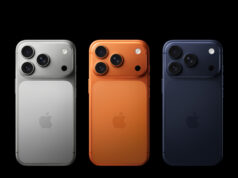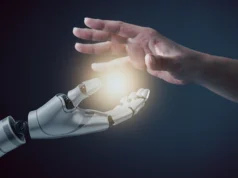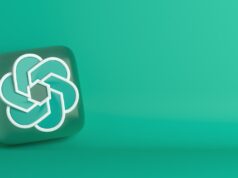On a field trip to a paralysis care center with my school, I observed how challenging it was for patients to interact with their caregivers and the environment. At that point, I had the thought, “What if a machine learning system could comprehend what they were attempting to say?” Pranet Khetan, an 11th grader, remarked. The youthful inventor has created a little tool that can interpret garbled speech.
Khetan claims that the gadget is the first open-source Automatic Speech Recognition (ASR) framework created specifically for Hindi dysarthric speech in India. Speaking about the gadget, Khetan stated that dysarthria—a motor speech impairment that affects people with paralysis, Parkinson’s disease, COPD, and other neurological conditions—was what most deeply affected him.
Dysarthria has no effect on how the brain processes speech. Dysarthria sufferers understand what other people are saying and know what they wish to say.
Speech recognition in Hindi
The gadget, which Khetan has named Paraspeak, attempts to fill a significant vacuum in the industry. Despite the lack of specific data, dysarthria is a fairly common speech disorder in India. The teenager claimed that although some study has been done on English dysarthric speech detection, there are currently no treatments for those who speak Hindi. Since more than 40% of Indians speak Hindi, that is why I chose it. Surprisingly, however, there isn’t a dataset for dysarthric speech in Hindi. To train a model, no one has ever searched for and gathered Hindi dysarthric speech, he clarified.
This resulted in data collection, which was one of the most difficult parts of his endeavor. The teenager visited non-governmental organizations and care facilities as part of his research, and he produced the first-ever dataset of Hindi dysarthric speech, which included 42 minutes of recordings from 28 patients. He later extended it to 20 hours of synthetic training data using advanced data augmentation techniques. For people with dysarthria, even a basic statement consisting of three or four words might need time and effort.
It was quite emotional since people with dysarthria have trouble understanding what you’re saying. Thus, they eventually retreat from their environment and give up on speaking altogether,” he said.
Many of these patients were exerting a great deal of effort, and in numerous instances, even when I and the doctor advised them to stop, they continued. They were quite delighted to help. Khetan submitted a patent application for the gadget after real-time testing.
The technology underlying Paraspeak
According to Khetan, the transformer architecture, which powers large language models like ChatGPT and Claude, is the foundation upon which the tiny gadget is based. He modified the architecture for speech recognition on the gadget, though. In terms of operation, the device transforms dysarthric patients’ sluggish, ambiguous speech into intelligible, clear speech that may be played out loud.
The gadget is small enough to wear around the neck and has a form factor similar to that of a webcam. “This device only requires an internet connection to function. Its battery lasts a long time. It can go on for at least ten hours,” Khetan clarified. The patient only needs to push a button to start recording. After speaking into the built-in microphone, AI models operating on cloud servers process the audio and produce clear speech output.
Paraspeak’s scalability is what sets it apart. Paraspeak is intended to function across several speakers using the same underlying system, in contrast to current research solutions that only work with individual patients. There isn’t much research being done in this field right now. These models are limited to a single subject. Let’s imagine I train my model using the data from a single patient. Only with them will it work. He said, “It’s not scalable across multiple speakers.”
Budget-friendly design
One notable aspect of the speech recognition system is how inexpensive it was to build. According to Khetan, manufacturing the device costs Rs 2,000, and there is a monthly subscription fee of about Rs 200. Here, the subscription consists of telecom companies’ internet data packs. The teen claims that the device is accessible due to its inexpensive cost.
Speaking of cost effectiveness, Khetan acknowledged that it took a year and several revisions to achieve. He used specially printed circuit board designs to gradually reduce the size of the initial prototype, which was large and had several wires attached. “I have created my own circuit boards that are printed to order. The internal operation is nearly identical to that of a smartphone. Khetan, a student at Shiv Nadar School in Gurgaon, said, “I’ve tried to design this to be as small as possible, using very compact, custom electronics.”
According to Khetan, Paraspeak is currently a functional solution that has been tried on actual patients and is not merely a proof of concept. Khetan, whose invention was also honored at the Regeneron International Science and Engineering Fair (ISEF) 2025 in Ohio, USA, stated, “I tested it on multiple patients with a variety of diseases like congenital disorders, paralysis, Parkinson’s, and COPD, and they were content with the fact that the device worked for them.” Additionally, his work received recognition in the IRIS National Fair in India.
Currently, more than 75% of people with Parkinson’s disease and nearly all people with late-stage Amyotrophic Lateral Sclerosis (ALS) have dysarthria. Many people can find hope in technologies like Paraspeak. Since there is currently no commercially available treatment for this illness, Khetan explained, it is a unique piece of technology.
Khetan responded, “I’m really passionate about assistive technology,” when asked what he finds most exciting about technology. There are many different aspects of technology that can be used with assistive technology to positively impact the lives of countless individuals worldwide. Solutions that have a real human impact—where you can see someone’s life change right away—are the best.







